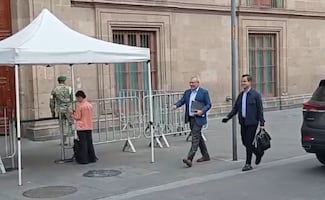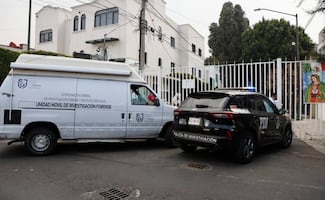Más Información

Senador del PT propone crear televisión, radio y periódico de la 4T; debemos hacer frente a medios de derecha, dice

César Duarte comparece ante jueza en penal del Altiplano; buscan vincularlo por presunto lavado de dinero

¿Qué es el Tratado de Aguas de 1944 entre México y EU por el que Trump amaga con imponer aranceles?; te explicamos

Gobernador de Michoacán se reúne con Sheinbaum en Palacio Nacional; acude también gabinete de Seguridad

Posponen en el Senado discusión y votación de reforma para crear la figura de “jueces sin rostro”; se discutirá en febrero

VIDEO Hallan a pareja sin vida en colonia Lindavista; una de las víctimas era abogado que litigó temas de despojos en Ecatepec
A geographical dispute which took place in 1933 between two southwestern municipalities in Guatemala, close to the Mexican border, turned into a violent conflict due to Mexican cartels infiltrations that sought to control a million-dollar profit crop: the opium poppy production, heroin's raw material.
The Congress of Guatemala, by a majority of votes, approved yesterday the government's decision issued last Thursday to decree a state of siege in the area for 30 days.
The old conflict of the boundary demarcation between Tajumulco and Ixchiguán veils the background of current problems, fueled by organized crime fights to take possession of opium poppy fields in a couple of Guatemala villages.
The crisis worsened on May 6, when villagers heavily armed with assault rifles held 17 police officers. Also, schools and health centers are closed because of the violent confrontations between rival groups, informed yesterday Guatemala's Ministry of the Interior to EL UNIVERSAL.
Rodolfo Zelada, a government spokesman, said that there are strong suspicions about the Sinaloa Cartel and Jalisco New Generation Cartel being the chief buyers of opium poppy bulbs or pulp, which are used to process heroin in clandestine laboratories in the Mexican-Guatemalan border, in order to stock particularly the American market.
“It is a region where the altitude and the climate favor the planting and harvesting of the opium poppy which is then moved to Mexican territory” to obtain heroin, he explained.
The crisis centers on a southwestern sector of San Marcos, known as The Poppy Golden Triangle, a plateau integrated by Tajumulco, Ixchiguán, and Sibinal, which has a special microclimate to grow the opium poppy, producing 3 or 4 harvests a year.
The crop renders Guatemala as a base for Mexican cartels, that also traffic cocaine from Colombia and other South American countries to Mexico and the U.S. by Central American land, air or sea.
mr
Noticias según tus intereses
[Publicidad]
[Publicidad]








